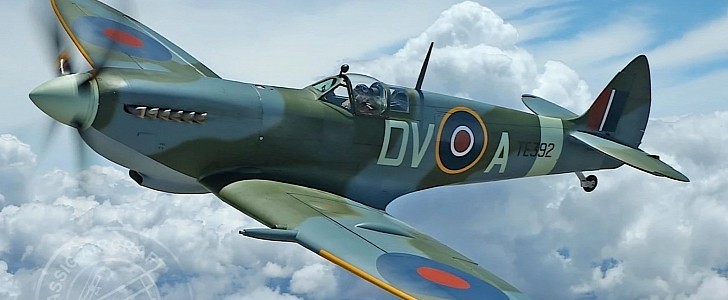The Supermarine Spitfire is one of the most famous airplanes of the Second World War. Created by the British in the second half of the 1930s, it was instrumental in keeping the Luftwaffe at bay during the years of the Battle of Britain.
Even if another plane, the Hurricane, was actually the one that carried the biggest burden during the fights over the British Islands and the Channel, the fact that Spitfires were mechanically better and thus scored a higher number of victories made them the public’s favorites back then, and propelled them to an icon status that lasts even to this day.
Born as single-seat fighter aircraft, the Spitfire was made in large quantities. Well over 20,000 of them left the assembly lines starting 1938, and some flew well until 1961, when the last of its kind was retired. The Brits were the main customers for Supermarine’s plane, but a host of other nations used it both during and after the war - close to 40, both allies like France or Canada, and former foes, like Italy.
Generally powered by one Rolls-Royce Merlin engine, the airplane was capable of flying at speeds of 370 mph (600 kph) and had a range of 479 mi (771 km). Depending on configuration or use, it was armed with both machine guns and cannons.
Because such a great deal of them was made until 1948, some are still around. Like this one here, selling for £2,490,000 ($3,3 million at today’s exchange rates) on a specialized website.
This particular one was assembled in 1945, so it didn’t get a chance to fight in the war. It was deployed with the Royal Air Force, however, before being retired in 1952.
The plane has been restored not long ago and was only flown for 13 hours since. It is wrapped in an RAF Day Fighter livery, and its interior is factory-authentic.
Born as single-seat fighter aircraft, the Spitfire was made in large quantities. Well over 20,000 of them left the assembly lines starting 1938, and some flew well until 1961, when the last of its kind was retired. The Brits were the main customers for Supermarine’s plane, but a host of other nations used it both during and after the war - close to 40, both allies like France or Canada, and former foes, like Italy.
Generally powered by one Rolls-Royce Merlin engine, the airplane was capable of flying at speeds of 370 mph (600 kph) and had a range of 479 mi (771 km). Depending on configuration or use, it was armed with both machine guns and cannons.
Because such a great deal of them was made until 1948, some are still around. Like this one here, selling for £2,490,000 ($3,3 million at today’s exchange rates) on a specialized website.
This particular one was assembled in 1945, so it didn’t get a chance to fight in the war. It was deployed with the Royal Air Force, however, before being retired in 1952.
The plane has been restored not long ago and was only flown for 13 hours since. It is wrapped in an RAF Day Fighter livery, and its interior is factory-authentic.






